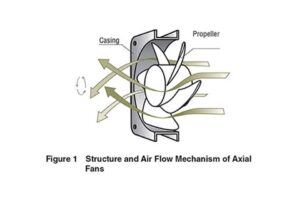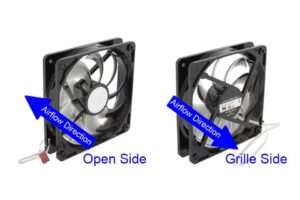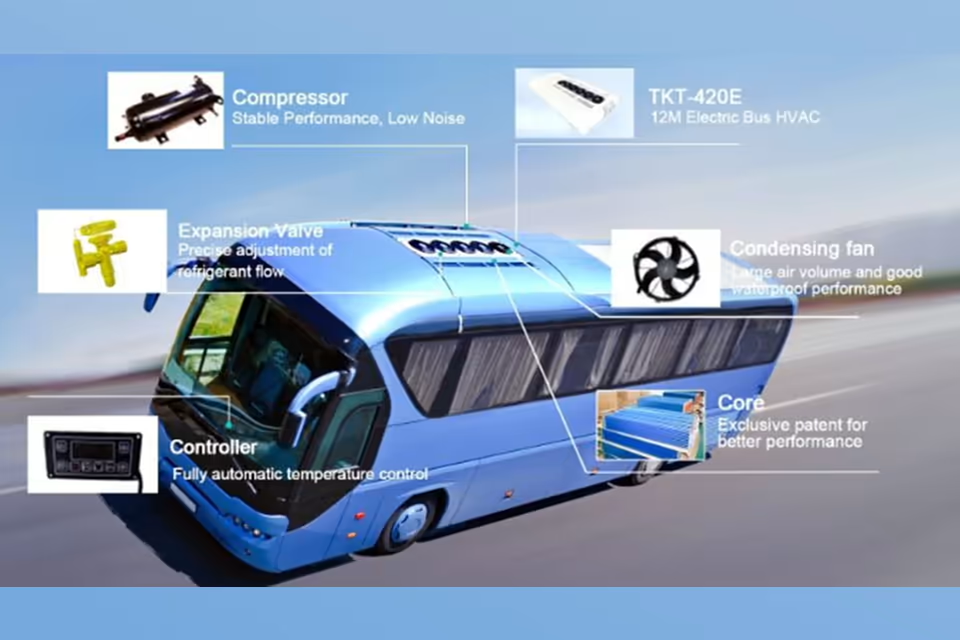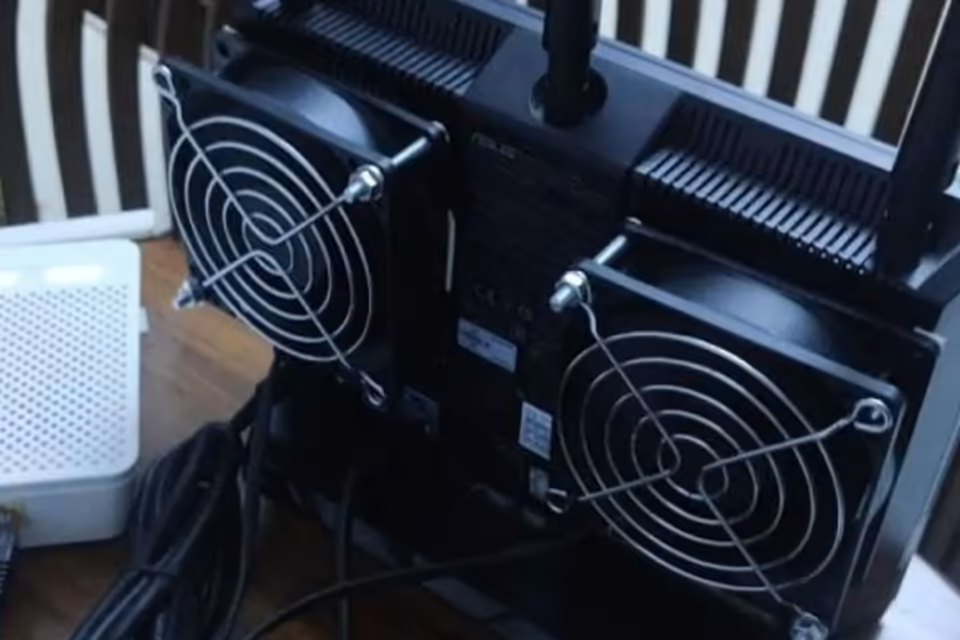The relationship among voltage, RPM (revolutions per minute), and airflow is a crucial aspect of electric motor performance, particularly in applications such as HVAC systems, electric vehicles, and various consumer electronics.
This triadic relationship highlights how increasing voltage can lead to higher RPM, resulting in increased airflow in systems that utilize fans or motors for ventilation and cooling. Understanding these dynamics is essential for optimizing efficiency and performance across a range of technologies, from small handheld devices to large industrial systems.
Voltage serves as the driving force behind motor operation, with a direct correlation to RPM in many types of motors. For instance, in direct current (DC) motors, an increase in voltage typically results in a proportional increase in RPM, while for alternating current (AC) induction motors, speed is predominantly influenced by the frequency of the input power.
Additionally, the airflow produced by a fan is directly linked to its RPM, with changes in rotational speed having an equivalent impact on the volume of air moved, often measured in cubic feet per minute (CFM) or cubic meters per minute (m³/min). This interdependence emphasizes the need for precise voltage regulation to achieve desired performance levels.
Notably, the interplay among voltage, RPM, and airflow can lead to controversies regarding efficiency and effectiveness, particularly when devices operate outside their specified limits.
For instance, excessively high RPM can result in mechanical losses, increased noise, and potential overheating, thereby diminishing overall performance and durability. Conversely, insufficient voltage can hinder a motor’s ability to reach optimal RPM, impacting airflow and efficacy in applications like electric air dusters and HVAC systems.
In practical terms, this relationship is particularly important for users seeking to maximize the performance of their devices while balancing factors such as noise levels, battery life, and maintenance needs. Innovations in motor design, such as brushless motors, have emerged to address these challenges, aiming to enhance efficiency while minimizing wear and tear in demanding applications, particularly in electric vehicles and energy-efficient systems.
Theoretischer Hintergrund
The relationship among voltage, RPM (rotations per minute), and airflow is underpinned by fundamental principles of physics and engineering, particularly in the context of electric motors and fluid dynamics.
Elektromotoren und Drehmoment
Electric motors convert electrical energy into mechanical energy through electromagnetic principles. The torque (T) produced by an electric motor can be expressed by the equation (T = K{T} φ I), where (K{T}) is a motor constant, (φ) represents the magnetic flux, and (I) is the current flowing through the motor. In steady-state conditions, the current remains constant, which simplifies the analysis of the system dynamics. As the motor speed increases, the back electromotive force (EMF) produced also increases, influencing the overall torque produced.
Leistungsanforderungen und Luftstromdynamik
The total tractive effort power ((P{te})) needed for an electric vehicle, for example, is influenced by various forces, including rolling resistance and aerodynamic drag. The rolling resistance power ((P{rr})) specifically accounts for the energy lost due to the deformation of tires on the road surface, and it is a linear function of vehicle speed, dependent on the coefficient of rolling resistance. This energy loss must be overcome for effective motion, linking the concepts of power, speed, and airflow dynamics in vehicular applications.
Druckverluste in Kanälen
In HVAC systems, airflow is dictated by pressure differentials, which arise due to resistance within the ductwork. The law of conservation of mass states that the mass flow entering a junction equals the mass flow exiting, assuming incompressibility of the air.
Dynamic losses occur due to changes in airflow direction and velocity as it passes through fittings and other duct components. These losses can be quantified using local loss coefficients, highlighting the relationship between airflow and system resistance, which is influenced by both voltage applied to the fan motor and RPM.
Zusammenspiel von Spannung, Drehzahl und Luftstrom
At a fundamental level, the input voltage (V) in a motor system can be expressed as (V = IR + L \frac{dl}{dt} + E), where (R) is resistance, (L) is inductance, and (E) is the back EMF. As voltage increases, the RPM of the motor also increases, assuming the load remains constant.
Consequently, airflow generated by the fan or motor correlates with RPM, with higher speeds resulting in increased airflow due to greater mechanical energy being converted into motion. However, it is crucial to recognize that at extreme RPMs, mechanical losses and aerodynamic drag can significantly affect performance.
This interplay of voltage, RPM, and airflow illustrates the complex dynamics involved in electric motor operation and fluid movement, crucial for optimizing designs in various applications, including electric vehicles and HVAC systems.
Spannung
Voltage plays a critical role in the operation and performance of electric motors, directly influencing both speed and torque. In essence, voltage serves as the driving force behind motor functionality, determining how quickly a motor can rotate. Higher voltage typically results in increased speeds, provided the motor remains within its operational limits.
Beziehung zwischen Spannung und Drehzahl
The relationship between voltage and motor speed varies depending on the type of motor. For DC motors, voltage is directly proportional to RPM (revolutions per minute), meaning that increasing the voltage leads to an increase in speed.
However, for AC induction motors, the speed is primarily dictated by the frequency of the input power and the motor’s windings rather than the supply voltage. While a higher voltage can lead to higher torque, it does not necessarily correlate with increased speed for these types of motors.
In practice, when the voltage supplied to an AC motor is insufficient, particularly during start-up, the motor may struggle to reach its rated speed. Low supply voltage can result in a sluggish start and even cause the motor to remain at low speeds, or “hover” without achieving its full RPM potential. Conversely, as the motor accelerates and approaches its rated speed, the voltage tends to stabilize at its rated level.
Auswirkungen von Strom und Last
Current also plays a significant role in determining motor performance. As the load on a motor increases, the current must rise to produce the necessary torque, which can result in a reduction in speed due to increased voltage drop across the motor’s internal resistance. In standard brushed DC motors, torque is directly proportional to current, which means that variations in current can affect the torque output and consequently the motor’s speed.
The internal dynamics of electric motors reveal that an unloaded motor would theoretically achieve a high speed corresponding to the supply voltage, but real-world losses—due to friction and electrical resistance—mean that some current is always needed to overcome these losses.
As such, the effective voltage available for acceleration diminishes as the motor speed increases, ultimately balancing the torque produced with that required by the load.
Drehzahl (Umdrehungen pro Minute)
RPM, or Revolutions Per Minute, is a crucial metric that quantifies the rotational speed of a motor. In the context of electric air dusters and similar devices, understanding RPM is essential as it significantly influences performance and efficiency.
Definition der Drehzahl
RPM measures how often the motor’s internal components complete a full rotation within one minute. A higher RPM indicates a faster spinning motor, which typically correlates with increased air movement and cleaning power. Conversely, a lower RPM suggests slower operation, leading to less air circulation and reduced dust-removing capabilities.
Auswirkungen der Drehzahl auf die Leistung
Reinigungsleistung
A motor operating at high RPM generates a more powerful blast of air, effectively dislodging stubborn dust particles from various surfaces. Therefore, RPM is directly linked to the cleaning efficiency of electric air dusters; quicker rotations facilitate more thorough cleaning in less time.
Akkulaufzeit
For cordless electric air dusters, the RPM can also impact battery life. Devices with higher RPM may drain the battery faster, necessitating more frequent recharging. Users should consider this aspect when selecting rechargeable models.
Geräuschpegel
Higher RPM generally translates to increased noise output. Consequently, users may need to balance their cleaning needs with their environment’s noise tolerance.
Einstellbarkeit
Many modern electric air dusters offer adjustable RPM settings, allowing users to tailor the speed to different tasks. For example, a lower RPM setting may be more suitable for delicate electronics, while a higher setting can be employed for robust machinery or extensive cleaning tasks.
Relationship with Airflow
RPM also has a direct correlation with airflow, often measured in CFM (Cubic Feet per Minute). The law of airflow states that CFM is directly proportional to the fan’s RPM; thus, any change in RPM will lead to an equivalent change in airflow. This relationship underscores the importance of RPM in determining how effectively air dusters can ventilate and clean spaces.
Luftstrom
Air flow is a critical aspect of ventilation systems and is defined as the volume of air produced by a fan, measured over time. It is typically quantified in cubic meters per minute (m³/min) in metric units or cubic feet per minute (CFM) in imperial units. The dynamics of air flow involve both air speed and volume, with high-speed fans achieving significant airflow by moving small volumes of air rapidly.
Factors Influencing Air Flow
The performance of an air flow system is heavily influenced by several factors, including impedance, static pressure, and the design of the enclosure. Impedance, which refers to the resistance to air flow, can stem from various sources such as electronic components, walls, or obstructions in the airflow path.
The relationship between static pressure and air flow can be modeled mathematically; for instance, static pressure often changes as a square function of changes in CFM, typically represented by the formula P = KrQn, where P is static pressure, K is a load factor, r is fluid density, Q is flow, and n is a constant, commonly approximated to 2 for turbulent systems.
As the density of components within an enclosure increases, the potential for obstructions also rises, leading to higher static pressure, which can hinder air flow to below its maximum capacity.
For effective ventilation design, it is vital to consider not only the fan selection but also the sizes and locations of intake and exhaust openings and the arrangement of internal components. Even the use of accessories like filters and screens can enhance fan durability, but may adversely affect the air flow characteristics.
Calculating Air Flow Requirements
In practice, estimating the actual air flow often involves assuming that it will be approximately half of the fan’s maximum capability. Therefore, it is advisable to select a fan that can produce double the required air flow to accommodate potential losses due to impedance.
For example, a fan designed to ventilate a 5 ft x 5 ft x 5 ft enclosure producing 5 CFM would theoretically take around 25 minutes to circulate the entire volume of air. However, real-world factors often complicate this simple calculation, underscoring the importance of precise fan selection and system design.
Relationship Among Voltage, RPM, and Air Flow
The relationship among voltage, RPM (revolutions per minute), and airflow is critical for understanding the performance of electric motors and devices such as fans and air dusters. Increasing the voltage applied to an electric motor results in a direct increase in RPM, as higher voltage leads to greater current flow, which enhances the strength of the motor’s coils, thereby boosting both RPM and torque. Specifically, if the voltage is halved, the maximum RPM is also reduced by half, illustrating the direct proportionality between voltage and RPM.
In addition to voltage, the frequency supplied to the motor plays a crucial role in determining its operational RPM. Motors are typically designed to function within specific voltage and frequency ranges; exceeding these limits can cause overheating and potential damage. Moreover, airflow (measured in cubic feet per minute, CFM) is also directly proportional to RPM, meaning that any variation in RPM will correspondingly affect the airflow output of the system.
For instance, a 10% reduction in RPM will result in a 10% decrease in airflow, emphasizing the interconnected nature of these parameters.
The dynamics of airflow and RPM are particularly relevant in applications like electric air dusters, where high RPM translates to powerful air blasts that effectively dislodge dust and debris from surfaces. The efficiency of these devices can be enhanced through adjustable RPM settings, allowing users to tailor airflow to different cleaning tasks while managing factors such as noise levels and battery life for cordless models.
Applications
The relationship among voltage, RPM, and airflow is critical in various industries, particularly in electric vehicles (EVs) and HVAC systems. Understanding this relationship helps optimize performance and efficiency across multiple applications.
HVAC Systems
In HVAC systems, the interaction between voltage and RPM is essential for maintaining proper airflow. The rotational speed of fans directly affects airflow volume (measured in CFM), and any variations in voltage can lead to changes in fan speed and, subsequently, airflow performance.
Furthermore, understanding how to balance speed and torque is vital; for instance, reducing fan speed slightly can significantly lower noise levels while still maintaining adequate performance. This balance is crucial in designing efficient ventilation systems that can optimize heat transfer and cooling, thus improving overall system efficacy.
Electric Vehicles
In the electric vehicle sector, advancements in battery and motor technologies have enhanced the efficiency of power delivery. Different companies are exploring innovative paths to enhance areas such as battery management and motor efficiency.
For instance, the absence of brushes in brushless motors reduces friction and prolongs motor life, making them ideal for applications in EVs, where efficiency is paramount. The integration of effective thermal management and component designs is crucial for enhancing the performance and reliability of electric motors, especially when they are subjected to varying operational demands.
General Applications
The principles of voltage, RPM, and airflow also extend to other mechanical systems. For example, the automotive industry relies heavily on these relationships to design components that ensure optimal performance under various conditions. Understanding the torque and speed limitations is fundamental in applications such as racing motorcycles and heavy-duty trucks, where the requirements for performance and load capacity differ significantly.
Moreover, innovations in tire technology, as seen with low rolling resistance designs, have demonstrated how optimizing one component can enhance the overall efficiency of vehicle performance.














